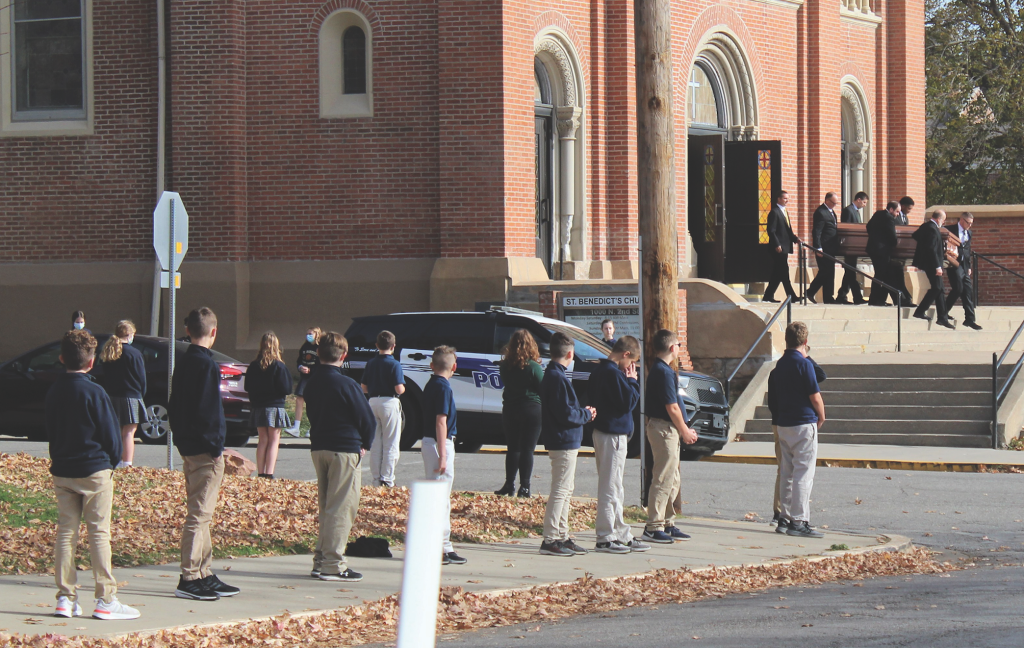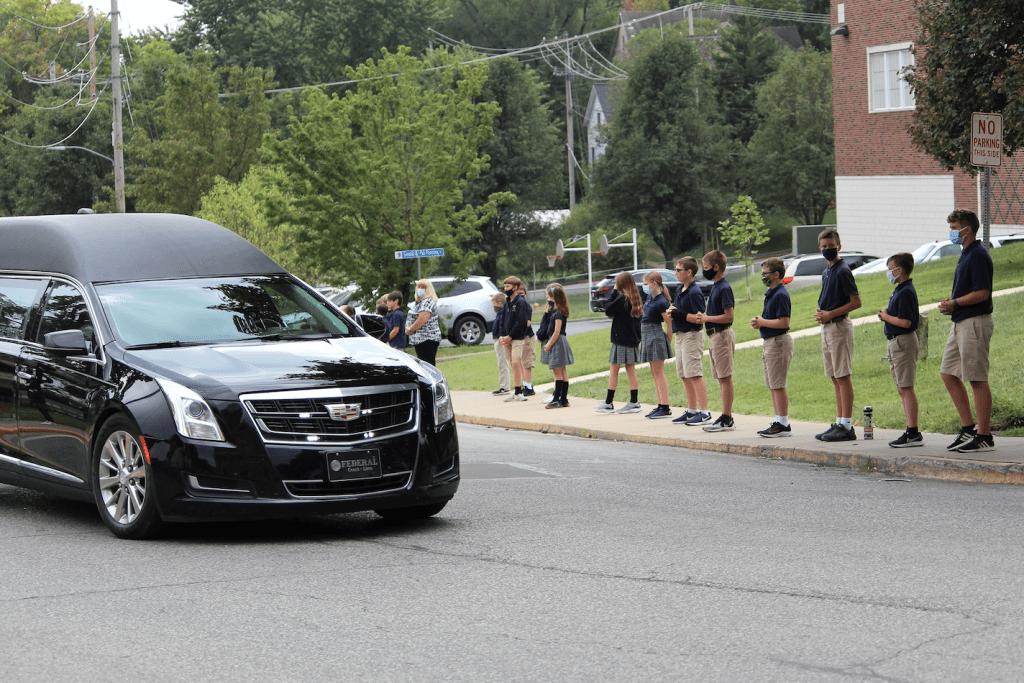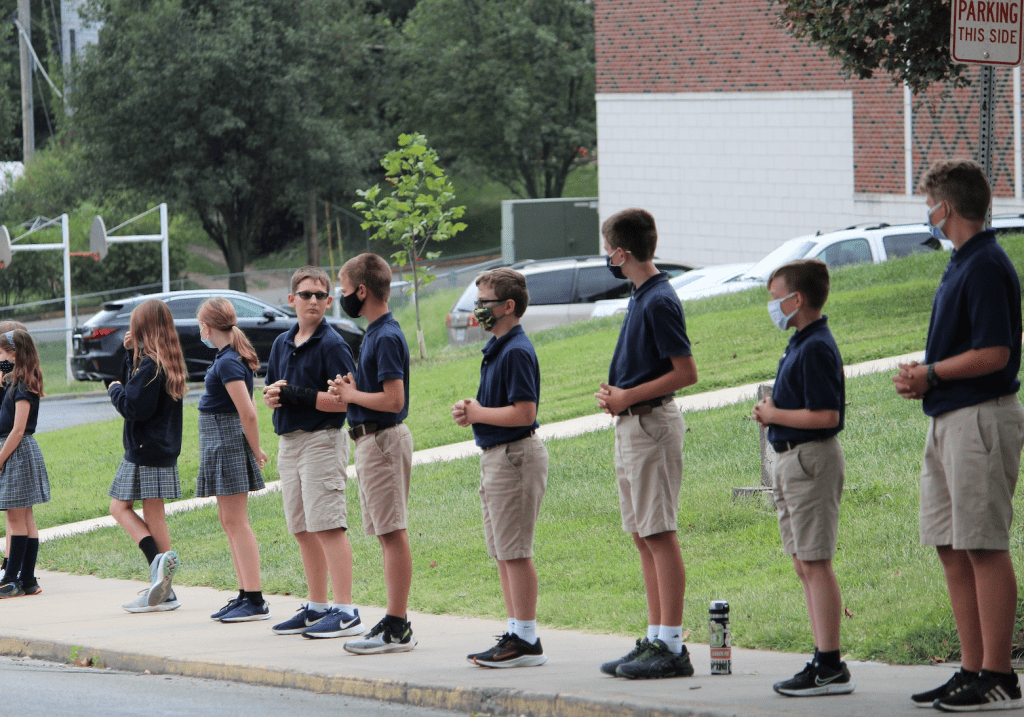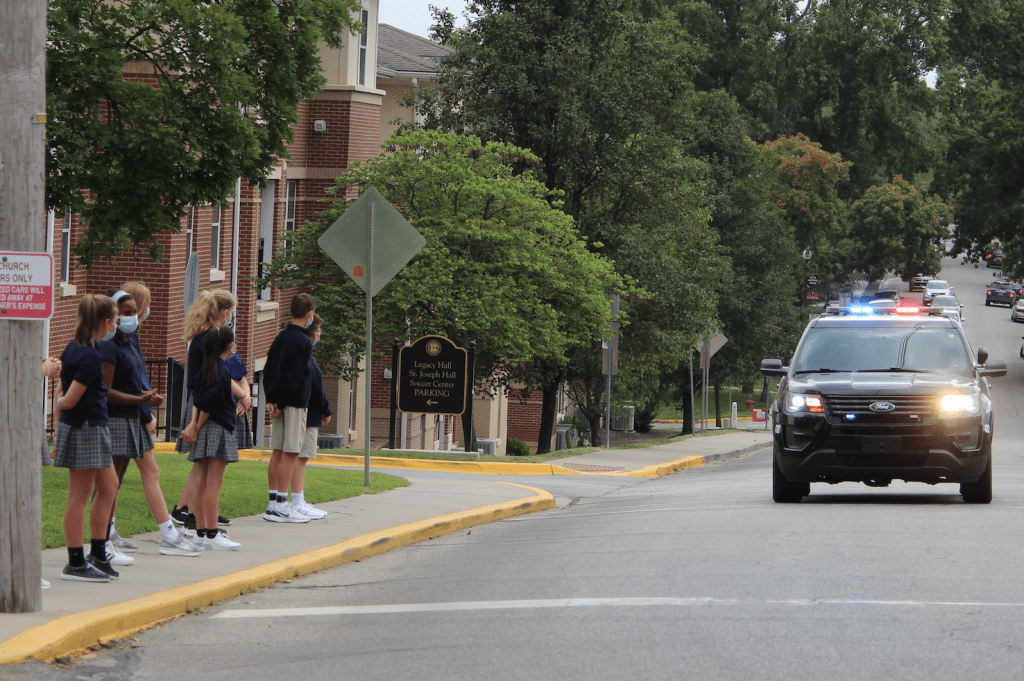
By Lisa Baniewicz
Special to The Leaven
ATCHISON — At St. Benedict’s Elementary School here, it is not uncommon to see students lining the sidewalks in front of the school.
They are modeling an important lesson: Being present and offering up a silent prayer can speak volumes.
After every funeral at St. Benedict Church, whether the deceased has ties to the school or not, the students line Unity and Second streets to pay their respects and participate in a corporal work of mercy — burying the dead. Father Jeremy Heppler, OSB, pastor of St. Benedict for the past five years, brought this tradition with him from Wichita and hopes it will become more widely practiced in the community.
“I remember in grade school any time there was a funeral procession passing by . . . we were expected to stop and be reverent,” he said. “It didn’t matter if we were at recess or just walking outside.”
He brought the idea up to then-principal Diane Liebsch because he wanted to implement corporal works of mercy at the school.

The seven corporal works of mercy are listed in the Catechism of the Catholic Church (No. 2447); they are named in the Gospel of Matthew; and they are mentioned in the Book of Isaiah. Although “burying the dead” is listed last, it has in a way become first for the St. Benedict students as they line the streets for funeral processions headed to Mount Calvary Cemetery.
“We attempt to get every grade out there at some point throughout the year,” said principal Helen Schwinn. “We try to follow a rotation so that several different ages are represented each time.
“The time of the funeral and weather often dictate which classes are available or best suited. Grades 3 through 8 most often participate due to their maturity and patience needed.”
The students are usually prepared ahead of time.
“After morning announcements they’ll tell us [that] later in the day we are going outside,” said eighth grader Aidrek Korbelik. “They ask us to behave reverently and to stand silently in prayer for the one who died, for their family and those close to them.”

Some teachers try to give the students additional information beforehand. Middle school social studies teacher and sixth grade religion teacher Melissa Schramp said, “We also try to share some information about the person: the person’s name, what he or she did for a living, information about his or her family. We want to give the students something to relate to as they pray for the grieving families and for the repose of this person’s soul.”
The significance of why the students are standing out there, sometimes in less-than-ideal weather, is not lost on the students.
“I think it’s important because they just lost somebody,” said fifth grader Phoebe Koechner. “It shows you care for them.”
Sixth grader Kyle Folsom said he prays Hail Marys for the family when they are driving by because he knows “it helps them get to heaven.”
“It makes me feel like I contributed to the people close to them,” added Korbelik, “like I’ve offered comfort to the people who experienced the loss.”

Mark Begley, who grew up in Atchison and is a parishioner at St. Benedict, graduated from the school in 1985 and is a parent of four children — two at Maur Hill-Mount Academy and two at St. Benedict. He said he always notices.
“I think it’s great. I try to see if any of my kids are standing out there,” said Begley. “I think it’s an example of showing their respect like the Knights of Columbus and honor guard do at funerals.”
In October last year, Begley was on the receiving end of this corporal work of mercy when he unexpectedly lost his father Mike. His parents, who are well known in the community, were married for over 50 years. When his mother Margie recalled seeing the children that day, she said, “It was beautiful! It really showed respect and love.”
Father Jeremy said that even though some people know of the practice, it still catches them off guard to see them lining the streets. Often the families will show their appreciation by giving a simple wave, honking a horn or — most often — by shedding a tear or two.
Schwinn is hoping this experience will challenge the students to find their own way to live out the corporal works of mercy in the future.
Father Jeremy, meanwhile, is seeing the practice impact the community.
“I don’t know if I’m more sensitive and notice it more now,” he said. “But I’m seeing more and more people, whether outside on their phone or out on their front porch sweeping, stop and wait until the funeral procession goes by.”






